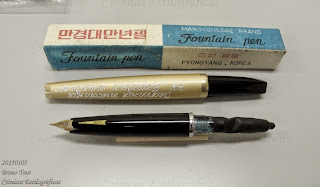Years ago I published a text on the size 10 series of nibs by Pilot. Now, some thread in the Fountain Pen Network has made that Chronicle popular again, and I thought that a writing sample of all fifteen nib points was in order.

Writing samples of the 15 nib options of a Cutom 742 (size 10 nib). The previously unreliable falcon (FA) nib seems to work fine now.
Fifteen different nib points ready available in two different models –Custom 742 and Custom Heritage 912— make Pilot stand apart from any other brand in the pen scene today. And the once faulty “falcon” unit seem to be working fine now.

The fifteen different options for the Custom Heritage 912 on the counter of a stationery store in Tokyo. Ready for anyone to try. From left to right, EF, F, SF (soft fine), FM, SFM, M, SM, B, BB, C (coarse, sort of BBB), MS (music, three tines), PO (posting, very rigid, pointing down, extreme F line), FA (falcon, flexible, cut shoulders), WA (waverly, pointing up, F line), and SU (stub).
The world of nibs is a lot richer than the very trite triad F, M and B. But we, stylophiles, are just too few and too weak in economic terms to justify a broad variety of nib points… Save in the case of Pilot, it seems.
Pilot Custom Heritage 912 - Sailor Yama-dori
Bruno Taut
Chuo, February 27th, 2015
etiquetas: plumín, mercado, Pilot
Bruno Taut
Chuo, February 27th, 2015
etiquetas: plumín, mercado, Pilot


































